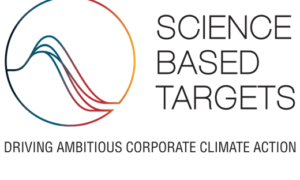Daikin, the global leader in heat pump and VRV technology, introduces its new VRV range with R-744 refrigerant (CO2) for the European market. After sharing its vision for implementing the EU HFC phase-down, Daikin shares its strategic vision for the Variable Refrigerant Flow (VRF) market.
Daikin’s has been at the forefront of developing solutions to lower the carbon footprint of its systems. This includes the revision of ENER Lot 21, with many in the industry calling for increases in seasonal efficiency requirements and F-Gas changes that are moving the industry towards natural refrigerants.
Bernard Dehertogh, Deputy General Manager DX at Daikin Europe N.V. says, “Decarbonising the building sector requires flexible refrigerant options due to varying application challenges. There is no one-size-fits-all solution. Daikin’s strategy is to select the best refrigerant for each application, balancing four key factors: safety, energy efficiency, environmental impact, and cost over the entire life cycle of a product. Daikin’s introduction of the first CO2 VRV unit, in addition to our VRV R32 range, reaffirms our commitment to the decarbonisation of commercial buildings.”
CO2 VRV, the low GWP solution
Using R-744 (CO2) has many key benefits. CO2 is a so-called natural refrigerant and is classified as non-flammable (A1) according to ISO817, and with a GWP value of 1, it has a very low Global Warming Potential.
CO2 VRV inherits all the typical VRV benefits: it is quick and easy to design and install and contains precise climate zone control options with quick response time. Bringing the Eurovent-certified CO2 VRV along with the flagship Round Flow cassette to the market signifies a major milestone in the transition towards the future VRV/VRF market in Europe.
R-32 VRV5 remains the best solution for most commercial and industrial applications and will remain so for the foreseeable future. With both refrigerant options, R-32 and CO2, Daikin will, however, be able to provide solutions for all commercial applications. Irrespective of the project’s selection criteria, efficiency, carbon footprint, lifetime carbon emissions cost, and GWP, Daikin will have a solution that fits.
VRV – proven low-carbon technology
Until today, VRV technology has contributed to saving significant amounts of CO2 emissions compared to any other fossil fuel heating solution. With both refrigerant options, R-32 and CO2, Daikin will be able to cover a maximum number of applications to decarbonise buildings, depending on the priority of the selection criteria related to efficiency, footprint, carbon emissions over the entire life cycle, cost, and GWP.
George Dimou, VRV product manager at Daikin Europe N.V. comments, “We are committed to developing VRV systems that offer the flexibility of choice for any commercial building, keeping a clear focus on energy efficiency, GWP, legislation and building trends. This CO2 VRV innovation is the next step towards offering solutions with a lower climate impact over their lifetime. Starting today, we will educate and train our network to support the adoption of this new technology as part of our full range of solutions. We aim to enable stakeholders to gain knowledge and develop expertise in future-proof solutions.”
“Adding CO2 to Daikin’s broad portfolio of VRV solutions, this innovation diversifies the choices on the market and lays the foundation for further developments”, adds George Dimou. “It is tailored for targeted decarbonisation initiatives such as supermarkets and retail establishments, focusing on heating and cooling systems that necessitate the use of natural refrigerants”. The units will be available from April 2025.
Cookie Consent
We use cookies to personalize your experience. By continuing to visit this website you agree to our Terms & Conditions, Privacy Policy and Cookie Policy.
















